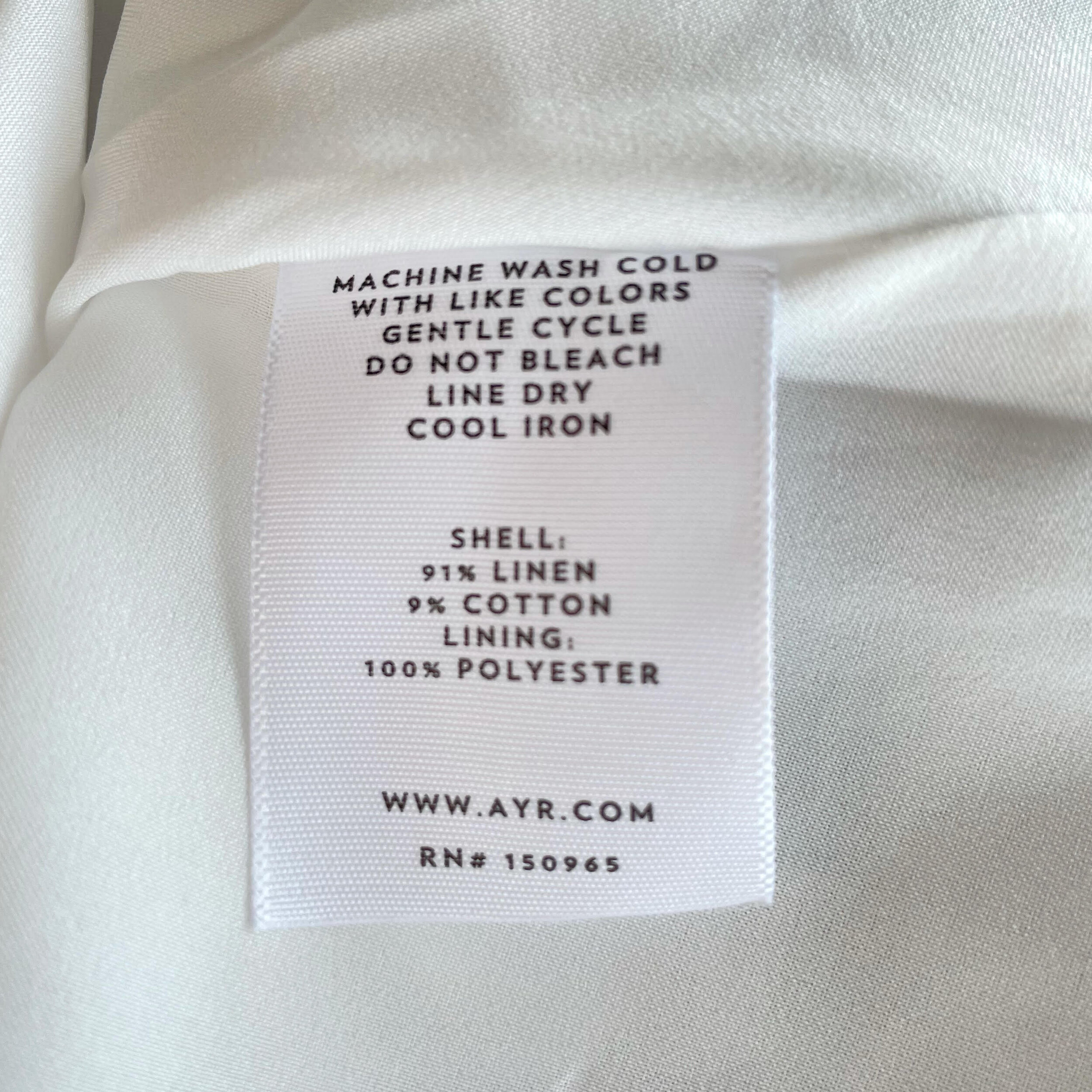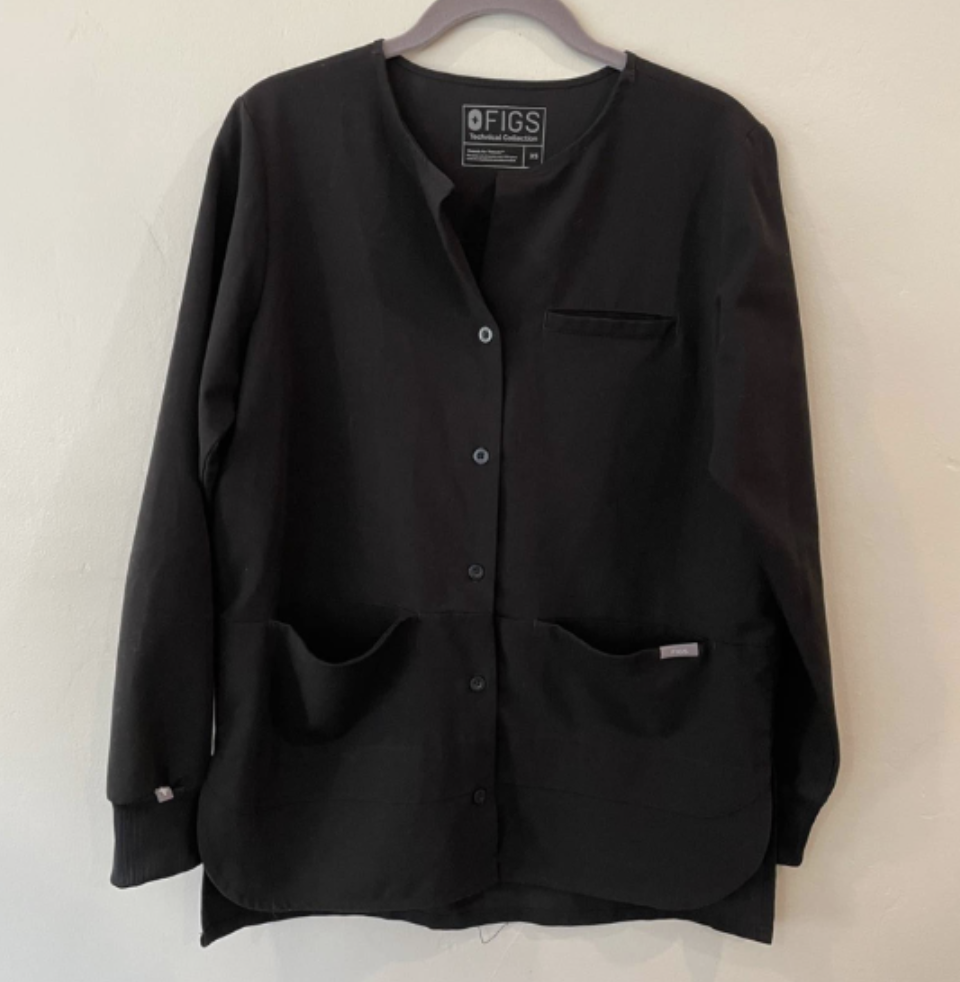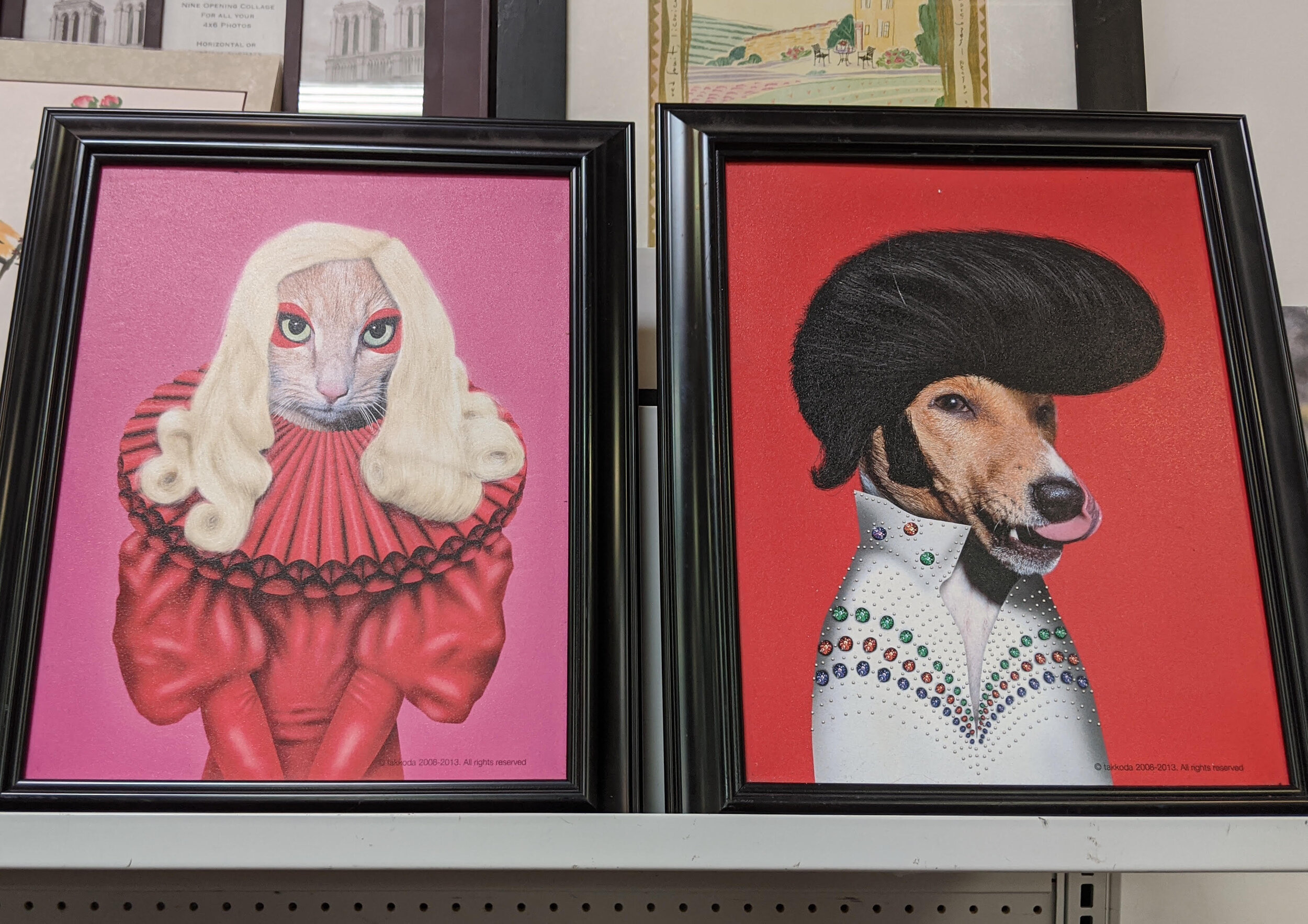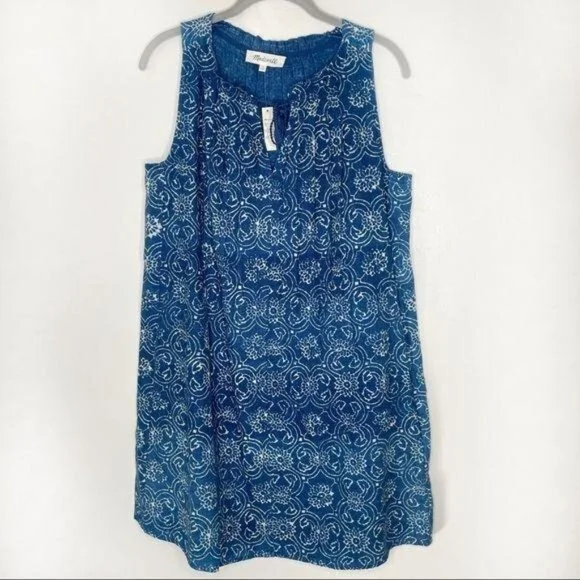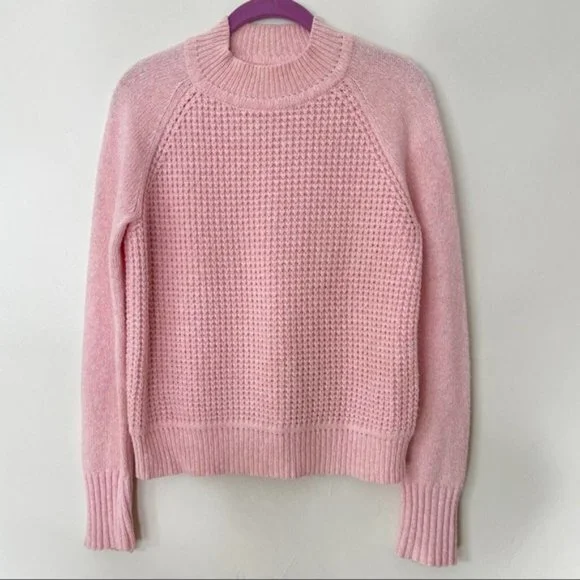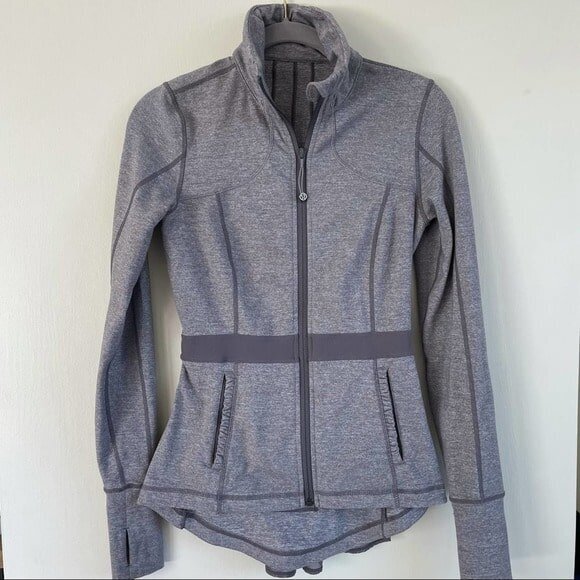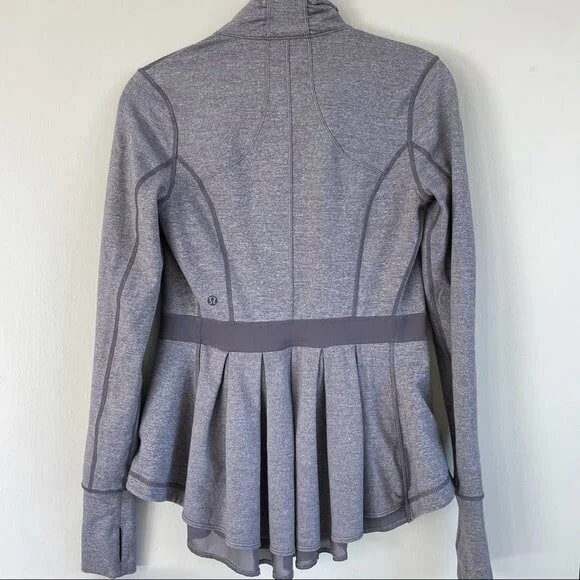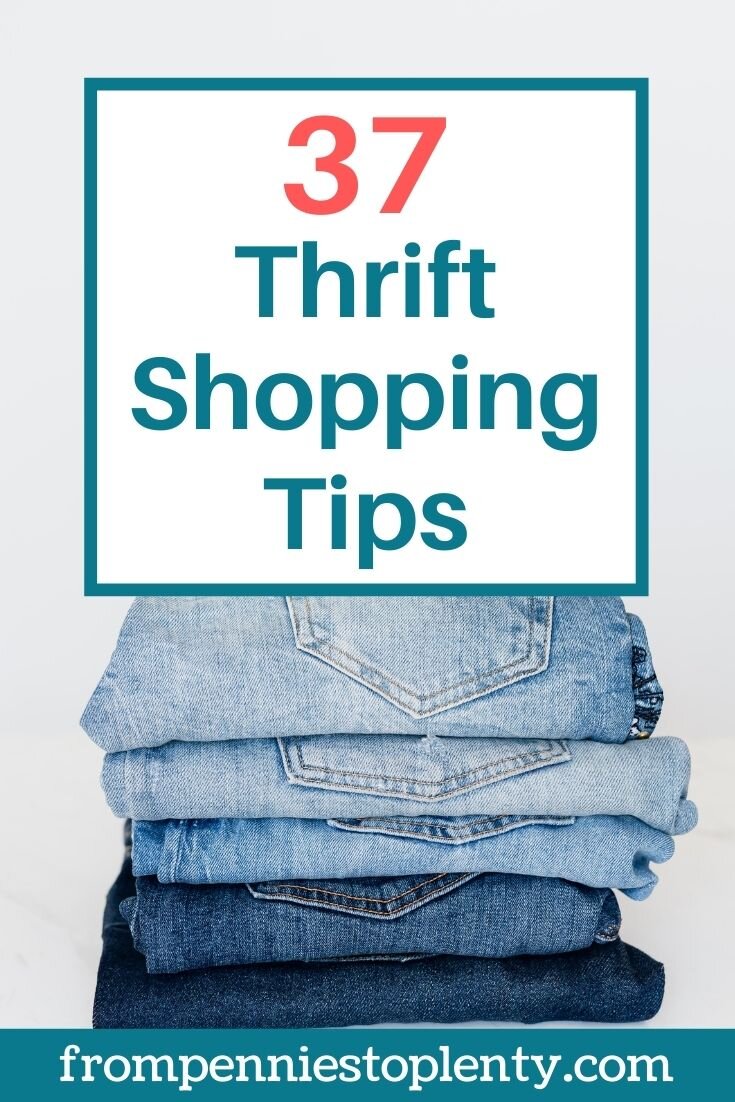37 Thrift Shopping Tips for the Best Finds
As long as I’ve been reselling, thrift shopping has been my favorite way to source inventory. It’s not always easy to find the best items, especially if you’re new to second-hand shopping. That’s why I wrote this post of 30+ tips to help you find the best items at the thrift store.
This post covers how to evaluate items and how to navigate a thrift store. Note that some of these tips pertain to clothing because that’s what I mostly buy and sell.
The tips are divided into three sections: item quality, navigating a store, and thrifting to resell.
Disclosure: This post contains affiliate links. This means that I may receive compensation when you click on a product link or purchase an item linked on this site. Click here for details.
** If you don’t have a Poshmark account, you can receive a free $10 bonus when you sign up with my code SFGIRL2015.
** On Mercari, you can get $10 when you sign up with the code JENMHM. The amount may vary by promotion.
Part I: Item Quality
1 | Check the condition of every item!
Check the condition of every item you plan to buy. Even if an item is new with tags, take a close look at it to make sure it’s in wearable or sellable condition.
Look closely because an item may look great at first glance. It’s only when you inspect every inch of it that you find a flaw or some wear.
You’ll want to find items in good or better condition. Some things to look for: stains, pills, holes, unraveling hems, buttons, broken zippers, missing sequins and beads, and even pinholes from price tags. These are all common on thrift store clothing.
Inspect items under good lighting and hold up items to the light if possible.
Shirts – Check collars and necklines for sweat and makeup stains. Look closely at the armpit and wrist areas. These areas stain and dirty easily due to sweat, pen marks, placing wrists on tables while eating, and general wear.
After looking at the outside of a shirt, I inspect it by single layers inside out. I flip the shirt upside down and hold the front up to the light. The back will drop. Then switch to inspect the back. When I look at a shirt one layer at a time, it’s much easier to spot faint stains or runs in the fabric. They can be hard to find on items with busy patterns.
Pants – Check the crotch, butt, and knee areas for stretched out or faded fabric, holes, and stains. Check hems as well for signs of fraying and repair. If a pair of pants have been altered, they may have poor hemming evidenced by uneven stitching.
Ensure all buttons are present. Sometimes extra buttons are available on the inside of a garment. Test out all zippers to make sure they work.
Workout wear – If you look at swimsuits, leotards, running shorts with gussets, or bodysuits, check the crotch area too before purchasing the item.
I most commonly see stains, holes, and pilling on thrift shop clothing. Pilling at the armpits, crotch, and butt areas of clothes is common. On women’s clothes, you may see pilling on one side of a sweater or jacket due to the constant rubbing of a purse.
You might not mind some wear if you’re purchasing an item for yourself. Even if you’re shopping to sell the items, most people understand that used items typically have some wear. Some stains and pills can be removed without further damaging an item.
Vintage Miller horse sweater found on a recent thrift shopping trip
I missed the darkened armpit marks on this Lululemon tank. Whoops!
Signs of high-quality Items
There are several telltale signs of quality in clothing. Knowing this will come in handy when you come across an item with a brand name you don’t recognize, find an item with the brand label cut off, or only want to buy top-quality items.
Well-made items have nicely sewn seams. You won’t see raw or roughly cut edges at seamlines. Seams should be sewn neatly and tightly with matching color thread.
Higher quality clothes have linings. Whereas fast fashion items will be a single layer, high-quality clothes like dresses and jackets will come with an inner lining.
For clothes that have patterns on them, the patterns should match at the seams. Stripes and plaid continue without looking disrupted, despite having been sewn together.
Buttons and buttonholes fit well together. Buttonholes are well-sewn and reinforced without any fraying to the area.
Clothes will usually be made of silk, wool, linen, or a blend with those versus cheaper materials like polyester.
Purses & handbags
If you find a nice purse or handbag in excellent condition, you’ve struck thrifting gold. Purses and handbags take a beating from use, so they can be hard to find in great condition.
First feel the bag to determine its material. Sometimes a bag will have a tag inside that tells you the material. Cheaper or fake leather bags feel stiff or plasticky.
Then inspect the handles and bottom because they get the most wear. Handles can be discolored and frayed from being touch so much. The bottoms of bags get scratches and discoloration from being placed everywhere.
Then look inside the bag. If the inside looks rough or dirty, can it be washed without ruining it? Some bags can withstand soap and water, scrubbing, and even a wash in the washing machine.
Don’t forget to check that the zippers and snaps are functional and that it has its accompanying parts.
If you see on the sides of the bag that there are places to attach straps, then you know it came with a long shoulder strap that is probably now missing. You might be able to use a different strap you already have or buy a replacement if you want to use that feature of the bag.
Shoes
Did you know that some resellers make a living selling just shoes? They’re a hot seller. It makes sense too because people need to wear shoes, and they’ll pay good money for the ones that work for them.
Bring socks or foot liners to protect your feet or wash your feet well when you get home.
Inspect the inside of the shoes. Does it look clean? When you press on the insole, does it have spring to it or does it feel flat and worn? You may be able to add new inserts if you like the shoes.
Inspect the soles. Treading that has come off is an obvious sign of wear. Be careful of shoes that have a significant amount of wear on the soles because they’ve been worn and shaped to someone else’s feet.
Test out shoes by bending them and trying them on. Some shoes have a reputation for falling apart with age, even if they haven’t been worn. One example is Dansko shoes. The soles of old Dansko shoes will crumble the moment you bend them.
Leather shoes, even if they’re several years or decades old, may still be wearable. Think about quality brands such as L.L. Bean. Their shoes are well-made to withstand wear and tear with proper care.
Shoes can lose their quality over time just by sitting in storage. The glue that holds shoes together loses its adhesiveness over time. Leather can become stiff and dry. If the shoes have been stored poorly, they will fall apart or crack when handled.
I missed the fading at the collar of this Gymboree sweater. The blue has turned a reddish. Whoops!
2 | Check the fit of every item you can
The easiest way to determine if an item fits and spot any flaws is to try it on. That may be difficult nowadays with more restrictions in stores. The dressing rooms at the thrift stores I visit are closed due to COVID.
You might be able to fix items that don’t fit perfectly. A pair of straight-leg pants can easily be shortened or a waist can be taken in without drastically changing the style.
Ill-fitting shoulders on a jacket and pant rise are much more difficult and costly to alter. Alternations can change the look of an item and add to the total cost of acquiring it and making it wearable.
3 | Know your measurements
Clothes from different brands can vary widely in fit, even if they have the same size listed on their tags. One way to know if an item will likely fit without trying it on is to measure it.
Take the measurements of your best-fitting clothes and carry those with you when you shop. That could be the waist, inseam, length, and rise for pants and the measurement from armpit to armpit for shirts.
You’ll need a measuring tape to measure items in the store. You can also measure clothes in comparison to the length of your hand or forearm. For example, the waist of a pair of pants could be equal to one arm’s length.
4 | Check the fabric content
Fabric content can tell you how durable and comfortable an item is. Clothing is made from either synthetic fibers or natural fibers or a mix of both.
Examples of synthetic fibers are nylon, rayon, spandex, velvet, denim, and polyester. Polyester is one of the most common synthetic fibers you’ll find in clothing.
Polyester is durable and inexpensive, which is why it’s used frequently in clothes manufacturing. It used to have a bad reputation for comfort and breathability.
Nowadays, polyester comes in varying quality. Synthetic fibers are improving in comfort, durability, look, and fit as well due to advances in how they’re made.
You might notice that your garment is made of synthetic fibers blended with natural fibers (e.g., rayon and silk). This allows the garment to have desirable natural fibers while being able to handle more wear and tear.
Natural materials such as cotton, wool, cashmere, and silk tend to be of higher quality than synthetic fibers. They typically cost more than clothes made of synthetic fibers.
While there’s nothing wrong with buying fast fashion made of synthetic materials, you might find those items wear out faster.
Look for items made of 100% cashmere, silk, and wool items. For coats, look for wool blend coats with more wool being better. These clothes have higher quality and better resale value.
This is the fabric tag of an AYR dress I recently found at the thrift store.
5 | Look where the item is made
Most clothes come with tags that say where they’re made, usually in foreign countries such as China or Bangladesh. It’s rare to find something that’s made in the USA today.
If you do find something made in the US, it’s likely of good quality and sells for a relatively high price at retail.
Some brands that manufacture at least some of their products in the USA include Pendleton, L.L. Bean, and Wildfox. These items can sell well at resale too because people want items made in the U.S.
6 | Figure out how to clean it
Look at the recommended cleaning method for an item. I like when it says it’s machine washable. That saves me from having to hand wash an item or take it to the dry cleaners.
Some people are undeterred by clothes that are dry clean only. They dry clean at home using products like Dryel and Woolite. Or they’ve calculated the true cost of the item with regular dry cleaning and think it’s worth it.
You might get away with washing some dry clean items carefully at home. Some dry clean and hand wash items can be steamed, hand washed, or even put in the washing machine without damaging them. I put those delicate clothes in a small net laundry bag and washed them on the gentle cycle.
Don’t forget to clean every item you purchase before wearing it!
7 | Be wary of buying white clothing
White clothes are notoriously hard to keep white. Not only do you have to worry about food and makeup stains, but body stains from sweat can also turn clothes yellow.
It’s disappointing to come across a great shirt or dress and find that everything is pristine except the armpits, which have faded or turned yellow. It can be hard to see the color difference too if the stain is faint and the lighting is poor.
You can try to make clothes white again using various washing techniques.
Soak the clothes in baking soda
Treat clothes with lemon juice
Add vinegar or Borax to the wash
Some people swear by these treatments and are undeterred by buying white clothing. If you do buy white clothing, be prepared to put in time and effort to clean it, possibly without success.
8 | Think about how you will use or repair an item
If an item has flaws, think about how you will use it or repair it. Some flaws are easy to fix.
If there’s a small mark or stain, I rub the fabric together lightly to see if the dirt or stain lightens. If it does, it can likely be washed out.
Mild deodorant stains usually come out by rubbing the fabric together, rubbing it with a dryer sheet, or washing the item. Even a small hole at a seamline or in an inconspicuous place can be mended without drawing attention to it.
I buy items in good condition, or I put them back on the rack. Any fixes beyond a washing in the machine add extra time and/or money to the true cost of an item.
It’s easy to think that you’re going to sew up a hole or hem some pants, but be honest with yourself though if you’re really going to do it or if the item will sit in the closet.
This is especially true for bigger items like home décor items and items for DIY projects. Those can be big undertakings. Only buy an item if you’re sure you’ll put in the work to make it usable or sellable or if your thrift store allows you to return items.
The hole in this Sofie D’Hoore dress could be embroidered without looking out of place.
9 | Consider the price of an item
Prices vary for the same items depending on where you shop. Shops will price primarily according to an item’s category, quality/brand, or both.
At my local smaller thrift store, shirts range from about $2.50-$5.50, which I consider reasonable. Anything the staff deems higher quality or brand name goes on the designer racks and can go for much more. Prices can be mind-boggling, even over retail.
At Goodwill, tops are $4.99-$9.99. Dresses are up to $14.99. That’s not always a deal when you can buy the same or a similar dress at Target for a few dollars more.
Expect that some things will be overpriced and some gems will be priced way below value. Your best bet to getting a good deal is to know how much things sell for at retail and used.
Look items up on your phone while shopping to compare new versus used and decide if it’s better to purchase or pass.
10 | Mind your budget
It’s good to have an idea of how much you’re willing to spend before you go shopping. It’s easy to get carried away. Five dollars on an item here and five dollars on an item there and suddenly you find yourself paying $50 at checkout.
If you’re on a budget, review your finds and cut them one by one until you’re under that amount. Your wallet and bank account will thank you later.
11 | Keep a BOLO (be on the lookout) list
While it's important to have an open mind about what you'll find while shopping, it's also helpful to have a list of things that you want to find.
Make a BOLO or be-on-the-lookout list to help you find these items. Some common items to put on the list are sweaters for winter, workout wear for the new year, and lightweight dresses for spring and summer.
Your BOLO list can have the names of brands and designers too. This is important if you thrift shop to resell because you want to find items that will bring you the most profit.
Currently on my BOLO list:
Boho style tops, skirts, and dresses
Spell and the Gypsy
Figs (a brand of scrubs and other medical wear)
Zimmerman
A Figs scrub jacket I found at the thrift store
12 | Put items on hold
Some stores will hold items for you. This is helpful if you need more time to research an item or you’re debating whether or not to buy it.
My best find ever was a hunting jacket that sold for several hundred dollars. I was walking on my way to the grocery store when I stopped at the thrift store and found it. It was too heavy and bulky to carry with me, so I asked the store employee to hold the item for me for about 30 minutes. I picked it up on my way back, and it made for a great sale!
13 | Dress comfortably
In pre-COVID times, you could try on clothes to ensure they fit. In the busiest of thrift stores, dressing rooms could be crowded, dirty, too far away, or have an item or time limit. If I had 20 items in hand, I didn’t want to wait for a room with a 3-item limit or 10-minute limit.
The best way around this is to dress in fitted clothing that is easy to layer shoes that are easy to remove. This way you can try on a sweater or jacket in the open if needed.
Trying on thrifted clothing is not for everyone. I rarely used to try things on because of the hassle of undressing and dressing and wanting to wash the clothes first. I just accepted that I would miss a flaw now and then or the item might not fit me.
I would only buy the item if I had a back-up plan for it. I would make use of the item in some other way or try to resell it.
14 | Hold on to your purse
Be careful when putting down your purse or any other personal item while shopping. Sometimes people get caught up trying on clothes or they’re carrying lots of items. They don’t realize that they misplaced their purse or jacket.
I’ve seen people accidentally leave a bag of items on the floor. I’ve seen other people scramble because an item of theirs went missing.
Maybe it’s because crime like that was common where I used to live, but it’s something that could happen anywhere. Some people wear crossbody bags or shop with the bare essentials for this reason.
15 | Plan to clean your thrift finds
You might want to wash and disinfect your purchases. You don’t know where those second-hand items have been before. They may have been worn without being washed after or stored away improperly for months or years.
COVID-19 is still spreading across the country as I write this. There are other bacteria and germs out there that you’d probably rather not encounter. Here are some things you can do if you want to be careful about your purchases:
Place your purchases in bags to carry out of the store, into your car, and home. They can be disposable bags that you use once (hopefully more) or reusable bags that can be washed.
Regarding COVID-19, you can let items sit untouched for several days or place them in the washing machine to clean them right away.
Place washable items in the washing machine.
Items that are dry clean only or new with tags can be run through the dryer.
Wipe down and disinfect non-clothing items like shoes and home goods.
How funny are these animal portraits! The thrift store is full of unique finds.
Part II: Navigating a Thrift Store
16 | Have a plan
It’s helpful to get a feel for the layout of a store and then work your way through each section. This way you can prioritize the sections that interest you most or where you find the most profitable items.
My first stop is always the new clothing racks. These are the racks of clothes brought onto the floor but not yet sorted to their appropriate department.
You’re viewing these items before most customers do and can get some great finds that way. If an employee is sorting that rack, just be friendly and try not to get in his or her way.
After that, I start with athletic wear because I’ve had success selling athletic leggings if I can find them in good condition. Then I move on to jeans and dresses. If I have time, I’ll browse shirts and sweaters. Last is children’s clothes and home goods.
I rarely look at shoes and purses because the pickings are slim and cost a lot at my local shops.
Everyone has a preference for how they like to work a store. You’ll develop a system too with time and visiting the same stores.
17 | Look at other departments and sizes
Thrift stores can be very disorganized. After a day of shoppers rummaging through the racks, you’ll find clothes of all styles and sizes mixed together in various departments.
Workers also don’t always know men’s and women’s sizing so they’ll put things in the wrong section. That’s why it’s worth browsing departments and sizes you normally would pass.
I’ve found small-sized women’s clothes in the children’s section and men’s athletic wear in the women’s section. An added benefit is paying children’s clothes prices for adult clothing.
A few thrift stores I visit have special sections for vintage clothing. You can find unique items and valuable items in this section, which is great for both personal use and reselling.
Vintage clothes tend to run small. Even if you’re a modern size small, you may have to try vintage clothes in the medium and large size sections to find something that fits.
If you’re shopping for yourself, it’s good to know your measurements and measure the clothing to ensure it will fit. Or assess the item to see if it can be altered.
Foreign sizes
It’s possible to find foreign-sized clothes in American thrift stores too. I do a double-take every time I see women’s clothing with a European size (usually 34-42) on the tag.
European brands sometimes have higher quality clothing or resell for more money. A Google search on your phone can quickly help you find out the American size equivalent and the value of the item.
In recent years, I’ve seen more and more items from Asia. Asian clothing often runs small. An item may say size large but look like an American size small. Take a look at the overall fit of the item rather than the size on the tag.
18 | Check out the jewelry and accessories sections
Jewelry and accessories can put the finishing touch on an outfit. But if you’re frugal like I am, you don’t want to pay a lot for costume jewelry you’ll only wear on occasion.
Goodwill in my area sells new jewelry from White House Black Market and similar mall stores for $5.99 each. Not bad, right?
I’ve found new socks from the popular hosiery brands Stance and Bombas as well new swimwear in the accessories baskets at the end of aisles. If you’re willing to do a little digging, you can end up with these great finds too.
19 | Check the go-back rack
The go-back rack is the rack by the dressing rooms that people use to hang clothes they don’t want. Those clothes are nice enough that someone else selected them to try on, but they decided not to buy them for whatever reason.
Lucky for you, those nice items may be just your size or style. Other hot spots for go-back items are the end of racks and by the mirrors.
A Reformation dress I found at the thrift store
20 | Don’t put anything down
Once you see something you like, take it and hold on to it. If you leave it there to think about whether or not you want it, it will be gone!
Keep an eye on your cart too or things will go missing from it, especially if it’s crowded or there’s a hot sale going on. Grab what you want while you can and then inspect the items later when you’re done working the store.
21 | Visit stores frequently
Those top dollar items don’t stay on the shelves for long. You have to be there to get them first, and that happens by visiting stores frequently.
If you live in a college town, hit the stores around winter and summer breaks. That’s when stores get a lot of donations because students are moving and clearing their closets.
Another good time to visit is in December when thrift stores see an upsweep in donations as people get in last-minute donations for tax deductions.
22 | Figure out the best times to shop
Some days and times are better for shopping than others. Many resellers like to shop when stores open. You can shop before other shoppers arrive and try to spot the ranks with newly arrived items.
I like to shop on weekday mornings, which only happens when I’m off from work. Weekdays tend to be less crowded than weekends. By Saturday afternoon, stores are often crowded and the best items will have been bought, leaving disorganized racks to be picked over.
23 | Give yourself time
When you’re starting thrift shopping, give yourself time to browse through racks, inspect items, look up comparables online, and decide if you want to purchase what you’ve found.
In a perfect world, I like to spend about 2 hours covering a mid-size store. That isn’t always possible though. Some days you might have less than 30 minutes to cover as many racks as possible.
Make do with the time you have, but give yourself more time if you can. You’ll be able to scour more of a store or visit multiple stores.
A new with tag Madewell dress I found at the thrift store
24 | Know your stores and their sale days
Many thrift stores have special events, sales, and additional discounts.
Before COVID-19 closures, the Goodwills in my area had a color of the week special. Items with the designated color tag would be 50% off. That stopped that once stores reopened.
More recently they’ve had sales on jeans and 20% off purchases on Super Bowl Sunday.
Some other discounts I’ve heard of:
$1 tag days
Category sales (e.g., 25% dresses)
Senior discount days
Receive credits if you donate to the store
25 | Bring hand sanitizer or gloves
Have you ever counted how many items you touch on a thrift shopping trip? It might be hundreds or even thousands of items if you visit multiple stores in a day.
At Goodwill Outlets, you have to dig through large bins full of clothes. Clothes may be dirty and there can be questionable items in the bins.
All of this leads to dirty hands. So wear gloves while you shop or use hand sanitizer until you have a chance to wash your hands after shopping.
26 | Check the return policy
Most thrift stores have stricter return policies than retail stores.
All the thrift stores I shop at don’t allow returns of clothing and household items. The one exception is for non-functioning electronics and even those have to be returned within three days of purchase.
Curated second-hand shops such as Crossroads and Buffalo Exchange may be slightly more lenient. The Crossroads I visit allows returns within seven days for store credit only and no returns on consignment items.
Double-check your items for flaws and be sure that you want them before handing over payment.
If you do catch a flaw in an item after checkout while you’re still in the store, ask if you can substitute it for something else or receive credit for your next visit.
An ALC sweater
27 | Check thrift store online sites
Did you know that some thrift stores have their own online stores? They often sort through their donations and put the best items there.
Goodwill San Francisco has an eBay store that sells a mix of high-quality and junk items. I was surprised that the descriptions were not very detailed for the sale of second-hand goods, but they did have some unique items I haven’t seen in their brick & mortar stores.
With some diligent browsing of online stores, you may find a gem at a price too good to pass up.
28 | Visit stores when you’re on vacay
Thrift stores across the country can vary widely in their type of inventory, sales, and prices. If you love to thrift shop and have the time, try visiting stores while on vacation.
I’ve heard that thrift stores in Hawaii are a great place to find jackets. Perhaps people buy them for their travels and then return home and eventually donate them.
Do a little research before your trip and don’t forget to include Goodwill Outlets, second-hand shops, buy-sell-trade stores, and vintage shops.
29 | Talk to the store staff
Get to know the staff at your stores. They can let you know when they restock, any upcoming sales, and other tips.
The women who worked at one of my favorite thrift stores were so nice to me. One of them allowed me to place an item on hold for about 30 minutes even though they don’t do holds.
Another saw me looking at a rack of new but untagged items and told me to let her know if I wanted anything. She would tag it for me.
Shoppers can sometimes receive discounts at an employee’s discretion as well. I once asked an employee if I could get a discount on a dress that had a hole in it, and she gave it to me.
30 | Join email lists for updates and sales announcements
Many thrift stores have caught on to marketing their businesses. They may ask you to join an email list but give you discount coupons or advanced notices of sales.
One store I visited let you earn $10 for every $200 spent. While that sounds like a lot to spend, it’s not when you shop regularly and resell as a business. The savings add up!
See what promotions thrift stores in your area offer and sign up if you can.
The most beautiful Anthropologie dress I’ve found at the thrift store resold for $75.
Part III: Thrifting to Resell
31 | Check sold prices online
If you’re buying with the intent to resell, use your phone to check the sold prices of items AKA comps before purchasing.
I check the retail price, how much it’s listed for on second-hand sites, and the price of sold listings on some combination of Google, eBay, and Poshmark.
This should be a quick process taking less than a minute per item and only for items you’re questioning purchasing. You can skip this for brands and items you know will sell well.
My main determiner of whether or not to purchase an item is the price of sold items. Don’t depend on the retail value to indicate its resale value.
Sometimes a name brand item will cost over $100 at retail but won’t sell for much second-hand. Sometimes a low-cost item will be an in-demand item and you know it will sell quickly.
Decide how much profit you would need to make for the item to be worth it to purchase. Some people will buy items to resell if they can make $5 from it. Others will be more selective and only purchase items that will give at least at $25 profit.
32 | Think about how to ship it
Packaging and shipping can be a real pain. Depending on which marketplace you sell on, you or a buyer may have to pay a lot for shipping due to the size or weight of the item(s).
This can deter people from purchasing your item and cut heavily into your profits. Forget about offering free shipping.
I prefer not to sell heavy items over 5 lb unless I think the potential profit is worth it. Poshmark’s weight limit for their standard shipping label is 5 lb. Anything over that up to 10 lb comes out of the seller’s profits.
Some people are undeterred selling heavier items. They’ll cut and tape boxes together and manage to get items to their buyer no matter what it takes.
Another option for selling heavy items is to list them for sale locally. The buyer can pick them up so you avoid shipping altogether.
33 | Look for in-demand brand names items
You’re probably telling me right now that I’m stating the obvious. You’d be surprised though how many name brand items do not sell well on resale sites.
There are the obvious luxury brands like Louis Vuitton and Burberry. I don’t find those in my local thrift stores, so I focus more on finding popular mall brands. Even within those brands, I only buy items that are in good condition or better and a current style.
A few of my favorite brands to buy:
Eileen Fisher
Lululemon
Reformation
Anthropologie (certain associated brands)
There are a few brands I consistently pass on. They are brands of yesteryear and don’t sell well from my experience, although they may sell for you.
Think about brands that are closing stores and filing for bankruptcy because they’re not popular anymore. You probably want to pass on them. A few of the brands I pass on: Bebe, BCBG, and Juicy Couture.
A rare Lululemon jacket I found at the thrift store
34 | Beware of counterfeit items
When a brand and its items become hot, counterfeits are sure to follow. It doesn’t only happen to luxury brands like Chanel.
Counterfeit items of brands like Lululemon, Longchamp, and Supreme are abundant as well. I’ve seen fakes from these brands sold at second-hand stores either because staff don’t know that these items are counterfeit or they don’t care.
Some people come across great finds like an authentic Burberry coat for cheap at a thrift store. Those finds are rare.
Do a quick assessment to see if there are any glaring flaws that would give away that it’s counterfeit. You can do an online search for obvious signs of a fake item for that specific brand.
Purchase the item if it’s cheap enough that you’re willing to take a gamble on it. Then get the item authenticated if you plan to resell it.
35 | Have a good attitude!
Thrift store shopping is not for everyone as much as playing golf is for everyone, so it helps if you enjoy it.
You have to enjoy the process of browsing through racks of often mediocre items and sometimes even junk to find good stuff. It takes patience and your hands will get dirty.
Some days you may strike out and leave empty-handed. Accepting that and being open to new experiences and items will help you enjoy the experience much more.
36 | Know when not to thrift
While thrift shopping has its benefits, some things are often better bought elsewhere. The more particular you are about what you want, the less likely you are to find it at the thrift store in one shopping trip.
You’re better off buying things like the wedding dress of your vision or a supportive plus-size swimsuit at a retail store or online unless you go to the thrift store frequently and give yourself ample time for the item to come along.
Another reason not to thrift is when you’re a reseller, and you have a huge pile of clothes at home waiting to be listed. It’s jokingly referred to as a death pile or a money pile.
Many resellers ignore or put off listing items because they want to go thrift shopping. It takes self-control and maybe some restrictions on yourself to stay home and list what you already have. Because how else are you going to get those items sold and make money?
37 | Donate from time to time
Thrift stores keep going strong because people donate to them. Go through your closets and drawers quarterly or at least yearly. Decide what to keep, sell, or donate. Your thrift store will appreciate the donations. Just don’t accidentally buy back what you donated.
Now don’t you just want to get out and go shopping!?!
What are some of your best thrift shopping tips?
Related posts:





